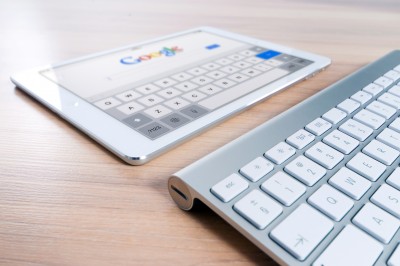Employee engagement was identified as one of three top priorities contributing to business success in a recent study conducted by Harvard Business Review Analytic Services.
Companies have tried everything from pet-friendly policies, lunchtime yoga sessions, and branded company tote bags to connect with their employees.
The trouble is, not everyone knows how to build these connections and measure their impact. This Harvard study found that many companies struggle to measure engagement and how it impacts business performance metrics such as customer satisfaction.
I spoke with Peter Gossin, product marketing manager on the US Windows and Devices Team at Microsoft, about how to find and provide the tools that employees need to do their jobs effectively and that also resonate with them on a personal level.
“I have a drawer full of pens and paperweights and other dust-collecting objects that were meant to recognize a company milestone or contribution, but they never created any connection or provided any lasting benefit,” says Gossin. “With all the cool, affordable technology out there, it would be so nice to receive something that keeps you connected to the things you care about.”
Gossin believes companies are missing a huge opportunity to connect with custom-branded technology and apps. Moderately priced tablets, many under $100, can be branded with a company logo and be loaded with customized content.
He offers three examples of winning strategies using technology to increase employee satisfaction and engagement.
1. Connect more closely with customers
Westgate Resorts is one of the largest resort developers in the world. Until recently, all of the company’s nearly 80,000 annual closings proceeded along a paper path, requiring agents to print, review, sign, and ship more than 40 documents. Preparing these documents took time, which slowed down the process and tested buyers’ patience.
Automating this process and then providing buyers with a branded and customized tablet during the closing made the connection stronger because the signing process was easy and Westgate had a way of engaging with their customers after the sale.
2. Celebrate major milestones in style
A regional bank had just reached a major milestone and wanted to celebrate in style. To thank its employees for their contributions, the bank selected branded tablets and Bluetooth keyboards.
Distributed at an annual holiday party, the gifts were presented in specially-designed packaging with customized content that complemented the experience. The employees were delighted because the gift showed that the bank put effort and care into selecting something truly valuable and useful for them.
3. Recognize and reward employees — and make it meaningful
Employee gift-giving programs of the past were generic and usually reserved for holidays and work anniversaries. Time to go beyond the mug by recognizing what is most meaningful to your employees.
Royal Caribbean knows its crew members are at the heart of the great vacations the brand delivers. It also recognizes the level of commitment it takes to live aboard a cruise ship, so they decided to invest in technology that made it possible to stay in touch with friends and family. Now they can talk face-to-face with loved ones via Skype, share photos, and send and receive email. The boost to crew morale was so high, Royal Caribbean is giving branded tablets to its more than 40,000 crew members.
The Harvard Study found: “There has been a shift toward investing for growth and away from cost reduction. Twenty-four percent of responding companies now say they are investing for growth in the coming year, while only 16 percent said they were doing this over the past three years, representing a significant shift toward investment.”
Gossin agrees, and says that because they are more affordable than ever, it makes good business sense to invest in tablets as part of customer reward or employee incentive programs.
When people are empowered to work from anywhere using today’s smart devices, brands can affordably delight their employees and customers and enable memorable experiences. Says Gossin, “You build employee and customer engagement by going above and beyond what’s expected.”



